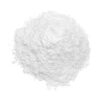- Your cart is empty
- Continue Shopping
JWH-018 for sale online
The world of recreational drugs is continually evolving, with new substances constantly emerging on the scene. One such substance that has garnered significant attention and controversy is JWH-018. This synthetic compound, often associated with synthetic cannabinoids, has profoundly impacted drug culture, law enforcement, and public health. This comprehensive article will delve deep into JWH-018, exploring its definition, history, chemistry, effects, legal status, and broader societal implications.
Introduction
JWH-018 is a synthetic cannabinoid that belongs to a class of compounds known as designer drugs. These substances are engineered to mimic the effects of tetrahydrocannabinol (THC), the psychoactive compound found in cannabis. Dr. John W. Huffman first synthesized JWH-018 in the early 1990s as part of research into the endocannabinoid system. However, this compound didn’t take long to enter the recreational drug market.
Defining JWH-018
- Synthetic Cannabinoid: It is a synthetic compound designed to interact with the cannabinoid receptors in the human body, particularly those in the brain. This interaction is intended to mimic the effects of THC, producing a similar psychoactive experience.
- Designer Drug: Drugs like JWH-018 are created by altering the chemical structure of existing substances to produce novel compounds. These compounds are often designed to circumvent drug laws.
- Chemical Composition: A complex molecule with a specific chemical formula and structure. Its systematic name is naphthalene-1-yl-(1-pentylindol-3-yl)methanone.
History of JWH-018
The story of JWH-018 is one of accidental discovery and rapid proliferation:
In the early 1990s, Dr. John W. Huffman, a chemist at Clemson University, was conducting research on the endocannabinoid system. As part of his work, he synthesized a series of compounds, including JWH-018, with the intent of better understanding the function of cannabinoid receptors in the body. However, little did he know that his creation would soon find its way into the hands of underground chemists and onto the streets.
By the mid-2000s, JWH-018 had become a key ingredient in the production of synthetic cannabinoids. Its psychoactive effects, similar to THC but often more potent, made it a sought-after substance in designer drugs.
Chemistry of JWH-018
Understanding the chemical structure of JWH-018 is essential to comprehend its effects and potential risks:
JWH-018 is a synthetic compound characterized by a naphthalene ring, a pentyl chain, and an indole ring. The naphthalene ring is the core structure, while the pentyl chain and indole ring are responsible for its cannabinoid-like properties.
The indole ring is a crucial component, as it mimics the structure of THC, allowing JWH-018 to bind to cannabinoid receptors in the body. This binding results in a range of physiological and psychoactive effects.
Effects of JWH-018
The effects of JWH-018 can vary widely depending on factors such as dosage, method of use, and individual sensitivity. Commonly reported effects include:
- Euphoria: Users often experience intense happiness and relaxation, similar to the “high” produced by cannabis.
- Altered Perception: JWH-018 can distort perception, leading to changes in sensory experiences, including visual and auditory alterations.
- Increased Heart Rate: Many users report an elevated heart rate after consuming JWH-018, which can be accompanied by anxiety and paranoia.
- Hallucinations: In some cases, JWH-018 has been associated with hallucinatory experiences, although they tend to be less predictable and more intense than those induced by traditional hallucinogens.
- Anxiety and Paranoia: Many users have reported experiencing extreme anxiety and paranoia after using JWH-018, which can be distressing and dangerous.
- Memory and Cognitive Impairment: JWH-018 can impair memory and cognitive function, affecting the user’s ability to think clearly and make decisions.
- Physical Effects: These include dry mouth, bloodshot eyes, and increased appetite, similar to the “munchies” associated with cannabis use.
- Addiction and Withdrawal: Some individuals have reported developing a dependence on JWH-018, leading to withdrawal symptoms when attempting to quit.
Legal Status of JWH-018
The legality of JWH-018 and other synthetic cannabinoids has been a subject of ongoing debate and regulation:
When synthetic cannabinoids like JWH-018 first emerged, they were not explicitly classified as controlled substances in many countries. This loophole allowed them to be sold openly, often labeled as “legal highs” or “herbal smoking blends.” However, as their popularity and potential risks became more evident, governments began to take action.
Many countries have since banned JWH-018 and similar compounds by adding them to their lists of controlled substances. For example, JWH-018 was classified as a Schedule I controlled substance in the United States in 2011.
Despite these regulations, underground chemists continue to tweak the chemical structures of synthetic cannabinoids, creating new, unregulated compounds that pose additional challenges for law enforcement and public health officials.
Implications for Society
The emergence of JWH-018 and other synthetic cannabinoids has raised significant concerns and posed multifaceted challenges for society:
- Health Risks: The unpredictable nature of synthetic cannabinoids like JWH-018 poses substantial health risks to users, including the potential for severe adverse reactions and long-term health consequences.
- Legal Challenges: Law enforcement agencies have struggled to keep pace with the constantly changing landscape of synthetic drugs, making it difficult to effectively control their distribution and use.
- Public Health Impact: Using synthetic cannabinoids has led to various public health issues, including emergency room visits, overdoses, and even deaths.
- Social Costs: Communities have grappled with the social costs of synthetic drug use, including the strain on healthcare systems and the impact on families and communities.
- Regulation and Education: Efforts to combat the spread of synthetic cannabinoids require a multifaceted approach that includes law, education, and harm reduction strategies.
Additional Information
| Weight | 25 grams, 50 grams, 100 grams, 500 grams |
|---|










Reviews
There are no reviews yet.